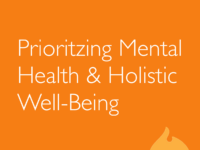On October 12, 2018, SHRM of Greater St. Louis held its 6th Annual Leadership Conference & Business Partner Expo.
HR leaders throughout St. Louis and surrounding areas gathered to attend a lively day of networking and speaking sessions covering some of the most pressing issues affecting the industry.
I had the pleasure of attending, and sat down with Becki Feldmann, System Leader of Employee and Candidate Experience at SSM Health, and Jake Bernstein, Senior Business Development Manager for Bonfyre, to discuss our key takeaways from the event.
—
Matt: How have you two been enjoying the SHRM leadership conference?
Becki: I’m here as a board member and as an attendee, so I’m seeing it from two different angles. It’s exciting to see so many businesses here sharing what they offer in the HR space and connecting with the professionals in the St. Louis area. As an attendee, I’ve been impressed with the speaking lineup too and the focus on diversity of thought. That’s really what the conference is all about: hearing brilliant ideas from all different types of people.
Jake: I’m here as a sponsor with Bonfyre, so what I’ve been able to take away so far is the challenges the attendees are experiencing. Many people are understaffed and under-resourced–an army of one if you will–with lots of priorities to implement. Notably, many seem to revolve around recruiting and retaining talent, with an eye towards the demographic differences permeating the workforce. One session I attended today, hosted by Mark Stelzner, focused on sourcing, evaluating, and implementing HR technology, as well as the relationships HR practitioners should have with providers to ensure success.
Matt: Already we’re diving into the key themes here of the event. The keynote speech from Lenora Billings-Harris, “Going the Distance: Revealing the Impact of Unconscious Bias,” was all about diversity and confronting bias in the workplace. We crucially need to understand that bias isn’t always a bad thing. Often, it’s a mental shortcut we form to make easier decisions. The conflict is that all biases–good and bad–are troublesome in a workforce that’s growing more diverse by the month, day, minute, hour, etc.
From the sessions I’ve attended, I’ve noticed we’re foregrounding the conversation about the changing world of work. Of course you can rattle off all the statistics as proof of this, but diversity is something that organizations have to confront, whether they like it or not. The question is, how do organizations get the tools in place to set themselves up for success later on? Becki, I know you attended both Lenora’s keynote and her speaking session afterwards. What did you think about what she brought to the table?
Becki: There’s two interesting questions she started with:
- Who’s on your team?
- Who gets to play?
Checking that box that says “We’re diverse” is not the goal here. We need to be diverse and inclusive. I’m stressing “and” here because you could hear Lenora do the same in her delivery! She talked a lot about belonging, which we know from being in the employee experience space is the key to everything. Employees want to feel that they belong, that they are being heard, and that they have a real opportunity to make a difference.
This is where the question of “Who gets to play?” comes in and why this is so integral to the organization. Lenora also asked, “Who are we not listening to and why?” These voices are out there in every organization. They’re saying things and they’re either being discounted or they’re having their ideas stolen, as Lenora showed with the FedEx commercial example.
There are so many awesome ideas out there, but we need to be open to hearing them. We’re bringing diversity of thought and backgrounds into our environments, but we need to fix those environments to be willing to accept all individuals and their contributions.
Jake: We need to really build up that culture of sharing. When there’s a disconnect that prevents that culture of sharing, there’s costs associated with that, whether it’s lost productivity or knowledge-sharing. These things allow people to do their jobs well, but they lose initiative when they’re stifled.
Becki: When someone stops being heard, they stop talking and sharing. When that happens, you’ve lost that person’s contributions. Employees pretty much check out at that point. They’ll continue to do their jobs every day, but they’re not going to give you any more because they feel tuned out.
Building connections for employee engagement
Matt: Another session I attended was led by millennial consultant Kendra Elaine. Her time today was devoted to confronting the inherent assumptions that business leaders have about millennials, uprooting why they’re misplaced or wrong. She led a very active conversation with attendees where she worked through where we’ve been in the past in regards to the divisions between older and younger workers. Key to her point, these divisions we’re having with millennials today are not necessarily new, but we need the tools, the empathy, and understanding to mend the fences.
Becki: We really just need to better understand one another, regardless of generational differences. The after-lunch presentation with Shari Alexander was all about the “Dark Arts of Influence.” She talked about influence and the nature of connection, which is another theme of the day. It was interesting when we started the conversation, the question was around “Why don’t people want to be influencers?” It’s because they’re afraid they’re being manipulative. But what I took away is that you’re learning how to better understand the other person so you can get to the best outcome. That takes you starting with the other person, not yourself. You need to make a conscious effort to connect with that person.
Matt: Sure, and it takes work on all sides of the equation. It’s not like one party does all the connecting. Everyone needs to be an active agent in creating that understanding.
Jake: As one of those pesky millennials, sometimes when one would approach me or vice versa, my question in terms of building that connection isn’t “What should I say” but rather “How should I feel, or make someone else feel?”
For millennials in particular, there’s often so much emotional engagement that needs to happen, more than something empirical or financial in nature. Research shows that money is the last variable that makes a millennial feel connected to a company. It’s emotional engagement and other factors that gives meaning to their work and the relationships they have.
Becki: Another thing Shari discussed was influential “VIBES”: Values, Identifiers, Beliefs, Emotional Triggers, and Secret Goals and Desires. It’s important to understand others emotional triggers: learning how to have a conversation with people through what matters to them–using people’s interests as reference points for metaphors. When you have a conversation with someone, equate it to something they’re passionate about, and put it in a positive state so that you can break down barriers.
Jake: We might call that relatedness.
Matt: Right. That all folds into our theory of employee engagement and relationship-building. You need to make a connection with other people to really get to know them.
RELATED: How Relationships Shape Engagement and Culture
Becki: And work ends up being more productive and effective when you’ve made that connection, too. At SSM Health we obviously have generational differences in our organization from older nurses to younger nurses. But if you ask them a question like, “What are you watching on Netflix?”–holy cow. They’re pulled together because now they have something in common, and as a result, they’re more likely to come to each other to problem-solve work questions and issues because of that connection.
Jake: That’s how I break the ice in regular conversations when I talk with prospective customers: “What are you binge-watching right now?” The answers I get lead to natural conversations and because that initial emotional bond has been established the rest of the conversation flows and as I continue the relationship it’s a little more natural.
Becki: Speaking of natural conversation…another thing Lenora discussed was the “culture of silence.” Specifically, why are people afraid of discussing things like diversity. It’s because they’re afraid of saying something “wrong.” I believe the more we connect with each other with natural conversation we are able to form more emotional connections to help put us at ease to have more sensitive conversations. That’s the basis of everything. We’re all human. We all have interests and hobbies, we have favorite shows. Let’s start from there.
Matt: Becki, you and I were both in Lenora’s second speaking engagement, which was all about giving yourself the tools for handling those discussions that can be filled with a little more friction. The key point she discussed was that you have to go into these conversations with an assumption of positive intent. Most people don’t wake up trying to ruin your day.
When you don’t have a source of commonality with someone–or you’ve never even interacted with them before–it’s so much easier to cast that entire notion of positive intent out the window. But taking the time to talk to, say, Jake Bernstein about Netflix for five minutes endears me to him more.
Jake: [laughs] We happen to have a lot of similar tastes in movies.
Parting thoughts
Matt: What have you learned here that you’ll take with you when you leave today? I, personally, liked Lenora’s keynote so much I made the impulse decision to attend her second session. As a result, I feel I’m leaving here with a much better understanding of what “diversity of thought” actionably means. Like a lot of business jargon, people will often deploy a phrase like “diversity of thought” just leave it hanging in the air without contextualizing it.
Today, I’m now approaching this concept from more than just this idea of having a bunch of people in the room that have different beliefs. From a work perspective, it’s having people looking at the same process, all with different understandings of how to do their work, but also understanding how to work constructively with each other to produce something greater. Beyond that process-oriented slant, it’s about having the trust that the people you see and work with every day trust you, assume positive intent, and want to do right by you–even if you all see things differently.
Jake: It can start even higher up than that conceptually. In the session about Sourcing HR Tech Providers, what Mark mentioned is that there’s a taxonomy problem in businesses. What employee engagement is to Becki differs a bit to me. Much in the same way, we define employee experience differently from others. Because of that, there are assumptions made and differences in perception. The more dialogue that can occur, and the more collaborative and iterative your process is, will ultimately end up being the right solution to solve problems. As a result, the HR practitioner ecosystem needs to be shared because not everyone has all the answers.
Becki: My takeaway has a lot to do with Shari’s presentation and all of these pieces we need to remember when we’re engaged in conversation. The word I keep coming back to is “intentional.” Sometimes when people hear that word, I think they feel it means putting in more effort. I don’t see it as effort. We just need to be more thoughtful, focused, open, natural and positive!
Matt: Intent doesn’t necessarily equate to effort, but it does mean being deliberate of what you’re trying to do.
Becki: And purposeful and meaningful.
Matt: Right, you need to spend the time to put more thought into the connections you make.
Becki: There are things that happen in conversations that are unintentional: biases, discounting someone’s feelings, or not understanding where someone’s coming from. If we are starting from a place of disconnect, our work will be negatively impacted. We will be so much more productive and satisfied if we start from a place of connectivity.


 8 min
8 min




